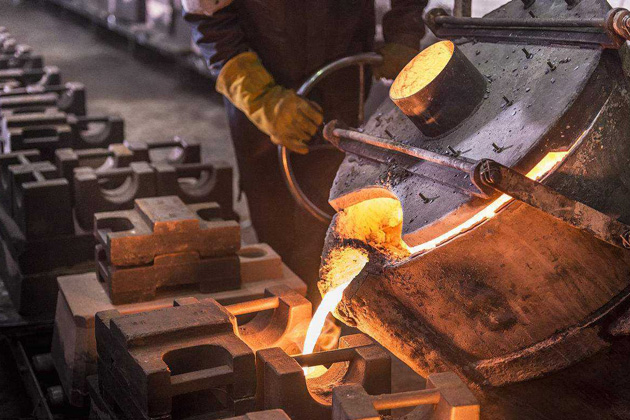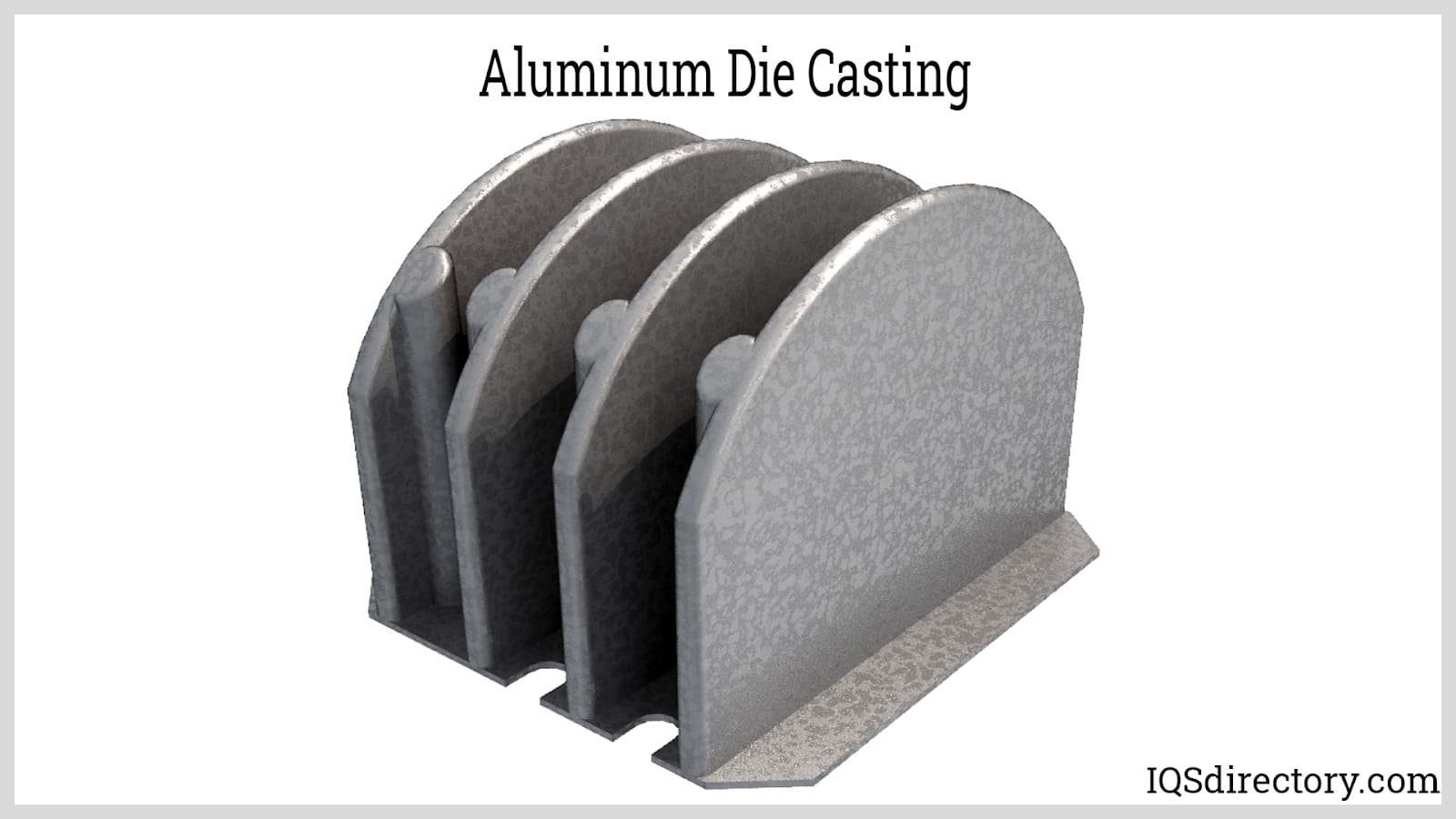A Comprehensive Overview to the Strategies Used in Aluminum Foundry Operations
Aluminum Foundry operations employ various casting methods, each with distinctive procedures and applications. Understanding these techniques is essential for enhancing manufacturing and attaining desired product homes. From sand spreading to die spreading, the options offered can substantially influence performance and expense. As innovation breakthroughs, so also do these strategies, motivating a better exam of their restrictions and advantages. The implications of these developments call for more exploration.
Summary of Aluminum Casting Techniques
Aluminum spreading methods encompass a selection of techniques made use of to shape molten Aluminum right into preferred kinds. These methods are critical in the production and engineering markets, offering convenience and effectiveness. Major methods include pass away casting, which uses high-pressure to inject Aluminum right into molds for accuracy parts, and gravity casting, where liquified Aluminum is put into molds drunk of gravity, allowing for bigger, less intricate shapes. Financial investment casting, an additional method, entails producing a wax pattern covered in ceramic, offering high dimensional accuracy for detailed styles. Additionally, irreversible mold and mildew casting utilizes multiple-use mold and mildews, improving manufacturing effectiveness and lowering waste. Each method satisfies details applications, stabilizing variables such as cost, production volume, and material properties. As markets evolve, innovations in these casting approaches remain to improve the quality and efficiency of Aluminum elements, positioning them as essential procedures within contemporary manufacturing.
Sand Casting: Refine and Applications
Sand spreading is an extensively used approach in the Foundry sector, understood for its simplicity and flexibility. Aluminum Foundry. This procedure involves developing a mold from a mixture of sand and a bonding agent, commonly clay. The mold and mildew is formed around a pattern, which is a reproduction of the preferred end product. Once the mold and mildew is prepared, liquified Aluminum is poured into the tooth cavity, permitting it to strengthen into the preferred shape
Among the key benefits of sand casting is its capability to create huge elements and intricate geometries, making it suitable for various applications, including automobile parts, machinery components, and attractive items. In addition, sand spreading can fit different Aluminum alloys, boosting its adaptability. The procedure is cost-effective for reduced to tool manufacturing runs, as it does not need pricey tooling. In general, sand casting remains a basic strategy in Aluminum Foundry procedures as a result of its performance in meeting varied manufacturing demands.
Pass Away Casting: Benefits and Limitations
While die spreading is typically contrasted to sand casting, it provides distinct benefits and restrictions that make it suitable for particular applications in the Aluminum Foundry sector. One substantial advantage of die spreading is its capacity to generate complicated forms with high dimensional precision and outstanding surface coating. This process is particularly beneficial for mass manufacturing, as it allows for faster cycle times and decreased labor expenses. Furthermore, die casting reduces material waste, improving overall performance.
Die spreading also has constraints. The preliminary tooling prices are fairly high, making it much less possible for tiny manufacturing runs. The procedure is best fit for metals with low melting factors, which can restrict material choices. Pass away casting is also restricted pertaining to the maximum dimension of the components produced, as larger elements might need alternative methods. Balancing these elements is essential for figuring out the ideal application of die casting in the Aluminum Foundry sector.
Investment Spreading: Precision and Information
Investment casting is a very accurate production process that allows for detailed styles and fine information in Aluminum components. This method provides substantial advantages, consisting of improved dimensional precision and lowered machining requirements. Its applications span different markets, highlighting its flexibility and effectiveness in generating intricate parts.
Refine Introduction
The investment spreading procedure is renowned for its capacity to generate detailed forms and high-precision parts. This method begins with creating a wax pattern, which is after that covered with a ceramic covering. When the shell solidifies, the wax is dissolved, leaving a specific dental caries for the liquified steel. The Aluminum is poured into this tooth cavity, catching the fine details of the original pattern. After cooling, the ceramic covering is damaged away, exposing the actors element. Any type of required finishing work, such as machining or surface therapy, is performed to achieve the desired specs. This procedure is specifically advantageous for complex geometries that are challenging to achieve through typical spreading methods, making sure both high quality and accuracy in the final item.
Benefits of Precision
Precision in financial investment spreading supplies considerable advantages, making it a preferred choice for manufacturing intricate parts. This method makes it possible for the manufacturing of elaborate forms with limited tolerances, decreasing the requirement for considerable machining and lessening product waste. The capacity to achieve high dimensional precision translates to a superior fit and finish, enhancing the total high quality of the end product. Additionally, financial investment casting enables the consolidation of fine information, which is vital for components calling for intricate styles. The process likewise sustains the usage of various Aluminum alloys, better broadening its applicability. Overall, the accuracy used by investment spreading not only improves the visual and practical characteristics of components yet likewise adds to improved efficiency in production cycles.
Applications in Industry
While numerous making procedures exist, investment spreading stands apart for its flexibility throughout different sectors, particularly in sectors requiring high precision and thorough components. This spreading method is extensively used in aerospace, auto, and clinical fields, where limited tolerances and detailed designs are essential. Aerospace elements benefit from financial investment spreading's capacity to create intricate geometries that decrease weight without giving up structural stability. The automobile sector employs this technique to manufacture engine components that call for durability and accuracy. In the clinical field, investment casting enables the production of surgical instruments and implants that need to fulfill strict top quality requirements. On the whole, investment spreading considerably enhances item performance and integrity, making it an indispensable strategy in modern production applications.
Comparison of Casting Techniques
 The comparison of casting techniques exposes distinctive advantages and applications throughout different check my blog strategies - Aluminum Foundry. Sand spreading is frequently commemorated for its flexibility and cost-effectiveness, while die casting is identified for its efficiency and precision in generating high volumes. Financial investment spreading, previously talked about, showcases its special capacity to develop intricate styles, better highlighting the diverse capacities of each method in Aluminum Foundry operations
The comparison of casting techniques exposes distinctive advantages and applications throughout different check my blog strategies - Aluminum Foundry. Sand spreading is frequently commemorated for its flexibility and cost-effectiveness, while die casting is identified for its efficiency and precision in generating high volumes. Financial investment spreading, previously talked about, showcases its special capacity to develop intricate styles, better highlighting the diverse capacities of each method in Aluminum Foundry operationsSand Casting Advantages
Sand spreading offers a number of advantages when compared to various other casting discover here methods, making it a recommended choice in numerous production applications. Among the primary benefits is its inexpensive, as the materials required, such as sand and steel, are low-cost and conveniently available. Furthermore, sand casting permits better design versatility, making it possible for the production of complex shapes and big parts that may be challenging to accomplish with various other methods. The procedure likewise suits a large range of steel alloys, including Aluminum, enhancing its flexibility. Sand molds can be quickly fixed or customized for subsequent casts, making it efficient for both huge and small production runs. Generally, these benefits add to sand casting's appeal in the Foundry industry.
Pass Away Casting Techniques
Pass away casting strategies attract attention as an extremely reliable technique for producing steel parts, especially when contrasted to traditional casting techniques like sand spreading. This process entails compeling liquified Aluminum into a mold under high pressure, resulting in precise dimensions and a smooth surface area finish. Unlike sand casting, which needs substantial ending up work, die casting minimizes post-production handling, boosting general efficiency. Additionally, die casting can suit complicated geometries, enabling complex layouts that would be testing to accomplish through various other methods. The rate of manufacturing is one more benefit; die spreading can create large amounts of parts in a much shorter timeframe. Overall, the mix of design, precision, and efficiency versatility makes die casting a recommended choice in contemporary Aluminum Foundry procedures.
Investment Casting Applications
Investment spreading, frequently described as lost-wax spreading, supplies distinct advantages over other casting methods, especially with regard to precision and surface area coating. This strategy enables the development of complex shapes and fine details that are challenging to accomplish with sand or pass away spreading. Additionally, investment casting creates elements with remarkable dimensional precision, reducing the requirement for substantial machining. Its convenience makes it ideal for numerous sectors, including aerospace, automobile, and medical gadgets, where top notch parts are essential. Contrasted to pass away casting, which can be restricted by mold intricacy, financial investment spreading masters generating intricate geometries without jeopardizing structural honesty. The choice of financial investment casting comes to be significantly positive for applications requiring high efficiency and integrity.
Top Quality Control in Aluminum Foundry Procedures
Just how can Aluminum factories guarantee the finest quality in their products? Executing rigorous quality assurance steps is important. Foundries commonly start by establishing clear specs for the Aluminum alloys utilized, ensuring they fulfill market requirements. Constant monitoring during the melting and putting procedures helps identify any type of inconsistencies from wanted chemical compositions.
Visual examinations and non-destructive testing techniques, such as ultrasonic or X-ray examinations, are generally employed to discover inner problems or incongruities in spreadings. Furthermore, analytical procedure control techniques track manufacturing data, permitting early recognition of possible problems.
Normal training and accreditation of workers in quality control techniques are important for preserving high standards. Lastly, applying comments loopholes from customers can assist shops refine their processes and boost item quality. By adhering to these methods, Aluminum factories can continually supply top quality products that satisfy or surpass customer expectations.
Future Trends in Aluminum Casting Innovation
Advancements in Aluminum spreading technology are poised to reshape the market landscape, structure upon well-known quality control practices. Advancements such as additive production and smart Foundry options are arising, allowing improved layout adaptability and reduced waste. The integration of synthetic intelligence and artificial intelligence in procedure surveillance permits real-time changes, boosting efficiency and product check out this site high quality.
Sustainability continues to be an essential emphasis, with a focus on recycling scrap Aluminum and minimizing power consumption. Advanced alloy solutions are being developed to optimize efficiency while decreasing ecological impact. The fostering of automated systems, consisting of robotics for pouring and dealing with, guarantees to improve work environment safety and security and accuracy.
Electronic twins are obtaining traction, allowing for digital simulations that assist in much better decision-making and anticipating upkeep. As these trends advance, they will likely develop a much more efficient, lasting, and technologically advanced Aluminum spreading industry, setting brand-new standards for high quality and efficiency.
Frequently Asked Concerns
What Safety Procedures Should Be Absorbed Aluminum Foundry Workflow?
In Aluminum Foundry procedures, necessary precaution consist of personal safety equipment, appropriate ventilation, routine training, risk assessments, emergency situation readiness, and adherence to procedures to reduce dangers related to molten steel and hefty machinery.
Exactly How Is Recycled Aluminum Made Use Of in Foundry Processes?
Recycled Aluminum is commonly utilized in Foundry procedures to lower ecological impact and production costs. It undergoes melting and refining, allowing manufacturers to produce high-grade items while conserving energy and decreasing waste in the Aluminum lifecycle.
What Equipment Is Crucial for Aluminum Casting?
Essential devices for Aluminum spreading includes furnaces for melting, molds for shaping, pouring ladles, cooling down systems, and finishing devices. Each part plays a vital duty in making sure the efficiency and high quality of the spreading procedure.
Just How Do Ecological Rules Impact Aluminum Foundries?
Ecological laws greatly impact Aluminum factories by imposing limits on emissions and waste monitoring. Conformity calls for financial investment in cleaner innovations, which can raise functional prices however inevitably advertises sustainability and lowers the ecological impact of the sector.

What Prevail Issues in Aluminum Castings and Their Solutions?
Typical defects in Aluminum castings consist of shrinking, porosity, and surface flaws. Solutions involve enhancing melt high quality, controlling air conditioning rates, and using proper mold and mildew design, ensuring far better honesty and performance of the last cast items.
 Major strategies include die spreading, which employs high-pressure to inject Aluminum right into mold and mildews for precision components, and gravity casting, where molten Aluminum is poured right into molds under the impact of gravity, allowing for bigger, much less intricate shapes. While die spreading is typically contrasted to sand casting, it supplies unique advantages and restrictions that make it suitable for particular applications in the Aluminum Foundry industry. Sand spreading is frequently commemorated for its flexibility and cost-effectiveness, while die spreading is acknowledged for its efficiency and accuracy in producing high quantities. Die casting methods stand out as a highly efficient technique for generating metal components, particularly when contrasted to standard spreading approaches like sand spreading. Contrasted to die spreading, which can be restricted by mold complexity, financial investment spreading succeeds in generating intricate geometries without compromising architectural integrity.
Major strategies include die spreading, which employs high-pressure to inject Aluminum right into mold and mildews for precision components, and gravity casting, where molten Aluminum is poured right into molds under the impact of gravity, allowing for bigger, much less intricate shapes. While die spreading is typically contrasted to sand casting, it supplies unique advantages and restrictions that make it suitable for particular applications in the Aluminum Foundry industry. Sand spreading is frequently commemorated for its flexibility and cost-effectiveness, while die spreading is acknowledged for its efficiency and accuracy in producing high quantities. Die casting methods stand out as a highly efficient technique for generating metal components, particularly when contrasted to standard spreading approaches like sand spreading. Contrasted to die spreading, which can be restricted by mold complexity, financial investment spreading succeeds in generating intricate geometries without compromising architectural integrity.